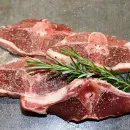 The Board ofthe Eurasian Economic Commission (EEC) decided toestablish and distribute tariff quotas for anumber oftypes ofmeat products and milk whey for 2022. Press service ofthe EEC reported.
According tothe forecast, volume ofconsumption ofproducts will expectedly exceed production ofcattle meat inthe amount of237,400tons, pork— 34,900tons, poultry meat— 281,300tons, milk whey— 500 tons this year.
Tariff quotas for 2022 for Kazakhstan and Russia were set inthe amounts fixed inthe protocols onthe accession ofstates tothe WTO. For Armenia, Belarus and Kyrgyzstan, they were determined within the difference between production and consumption, taking.
Read more...
The Board ofthe Eurasian Economic Commission (EEC) decided toestablish and distribute tariff quotas for anumber oftypes ofmeat products and milk whey for 2022. Press service ofthe EEC reported.
According tothe forecast, volume ofconsumption ofproducts will expectedly exceed production ofcattle meat inthe amount of237,400tons, pork— 34,900tons, poultry meat— 281,300tons, milk whey— 500 tons this year.
Tariff quotas for 2022 for Kazakhstan and Russia were set inthe amounts fixed inthe protocols onthe accession ofstates tothe WTO. For Armenia, Belarus and Kyrgyzstan, they were determined within the difference between production and consumption, taking.
Read more...
 This became known at a meeting in the Ministry of Agriculture on livestock breeding, where it was noted that over the past 10 years, more than 2 thousand dairy cattle breeding facilities have been put into operation, reconstructed and modernized throughout the country, and more than 792 thousand livestock places have been created in addition. Thanks to this, the productivity of cows increased by 25.6%, stressed in the press service of the federal agrarian department.
‘To further improve the breed qualities of dairy cattle, it is necessary to develop the domestic breeding base. To date, it is represented in dairy cattle breeding by 24 animal breeds of domestic.
Read more...
This became known at a meeting in the Ministry of Agriculture on livestock breeding, where it was noted that over the past 10 years, more than 2 thousand dairy cattle breeding facilities have been put into operation, reconstructed and modernized throughout the country, and more than 792 thousand livestock places have been created in addition. Thanks to this, the productivity of cows increased by 25.6%, stressed in the press service of the federal agrarian department.
‘To further improve the breed qualities of dairy cattle, it is necessary to develop the domestic breeding base. To date, it is represented in dairy cattle breeding by 24 animal breeds of domestic.
Read more...
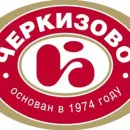 The new Committee will formulate the responsible approach of Russian business to solving social problems related to ensuring the affordability of food for all groups of the Russian population.
Starting this month, Cherkizovo Group CEO Sergey Mikhailov will chair the Committee of Food Policy in Russia. The Committee was formed at the initiative of the Russian Union of Industrialists and Entrepreneurs’ (RSPP) and seeks to solve social problems related to ensuring the affordability of food for all groups of the Russian population. Also, it will harness the opportunities offered by innovation, modern technology and best management practice to improve the.
Read more...
The new Committee will formulate the responsible approach of Russian business to solving social problems related to ensuring the affordability of food for all groups of the Russian population.
Starting this month, Cherkizovo Group CEO Sergey Mikhailov will chair the Committee of Food Policy in Russia. The Committee was formed at the initiative of the Russian Union of Industrialists and Entrepreneurs’ (RSPP) and seeks to solve social problems related to ensuring the affordability of food for all groups of the Russian population. Also, it will harness the opportunities offered by innovation, modern technology and best management practice to improve the.
Read more...
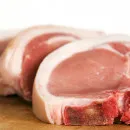 According to the Federal Customs Service, in January-March 2021, Russia sent 120 thousand tons of meat to foreign markets, which is 7.9% more than in the same period last year. Export revenue grew by 14% to $ 207 million, of which 45% came from pork, 37% from poultry and 16% from beef.
Pork shipments increased by 31% in volume to 48 thousand tons and by 59% in value to $ 93 million supported by increased exports to Vietnam.
All these factors have led to an increase in wholesale prices in the domestic market. But the situation may change, as it is planned to commission new capacities and stabilize export growth. The seller's market can become a buyer's.
Read more...
According to the Federal Customs Service, in January-March 2021, Russia sent 120 thousand tons of meat to foreign markets, which is 7.9% more than in the same period last year. Export revenue grew by 14% to $ 207 million, of which 45% came from pork, 37% from poultry and 16% from beef.
Pork shipments increased by 31% in volume to 48 thousand tons and by 59% in value to $ 93 million supported by increased exports to Vietnam.
All these factors have led to an increase in wholesale prices in the domestic market. But the situation may change, as it is planned to commission new capacities and stabilize export growth. The seller's market can become a buyer's.
Read more...
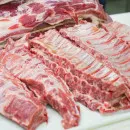 According to the state automated system "Argus", since the beginning of the year, domestic exporters have sent 351.2 thousand tons of meat and meat products to foreign markets. Last year, this figure was 340.3 thousand tons - thus, the export of meat increased by 3%.
The most dynamic growth is observed in the segment of beef supplies. In January-July, the volume of beef sent to foreign counterparties increased 2.6 times y/y: from 6.7 thousand to 17.4 thousand tons. The main share of purchases of Russian-made beef (11.2 thousand tons) falls on China. Along with China, the TOP-3 of its importers include Saudi Arabia and Kazakhstan.
The volume of pork exports.
Read more...
According to the state automated system "Argus", since the beginning of the year, domestic exporters have sent 351.2 thousand tons of meat and meat products to foreign markets. Last year, this figure was 340.3 thousand tons - thus, the export of meat increased by 3%.
The most dynamic growth is observed in the segment of beef supplies. In January-July, the volume of beef sent to foreign counterparties increased 2.6 times y/y: from 6.7 thousand to 17.4 thousand tons. The main share of purchases of Russian-made beef (11.2 thousand tons) falls on China. Along with China, the TOP-3 of its importers include Saudi Arabia and Kazakhstan.
The volume of pork exports.
Read more...
 ROS AGRO PLC (the “Company”), the holding company of Rusagro Group (the “Rusagro”), a leading Russian diversified food producer with vertically integrated operations, has announced the financial results for the six months ended 30 June 2021.
1H 2021 HIGHLIGHTS
- Sales amounted to RUB 104,372 million (US$ 1,404 million1 ), an increase of RUB 32,210 million (US$ 433 million, +45%) compared to 1H 2020;
- Adjusted EBITDA2 amounted to RUB 22,119 million (US$ 298 million), an increase of RUB 10,217 million (US$ 137 million, +86%) compared to 1H 2020;
- Adjusted EBITDA margin rose from 16% in 1H 2020 to 21% in 1H 2021; - Net profit for the period.
Read more...
ROS AGRO PLC (the “Company”), the holding company of Rusagro Group (the “Rusagro”), a leading Russian diversified food producer with vertically integrated operations, has announced the financial results for the six months ended 30 June 2021.
1H 2021 HIGHLIGHTS
- Sales amounted to RUB 104,372 million (US$ 1,404 million1 ), an increase of RUB 32,210 million (US$ 433 million, +45%) compared to 1H 2020;
- Adjusted EBITDA2 amounted to RUB 22,119 million (US$ 298 million), an increase of RUB 10,217 million (US$ 137 million, +86%) compared to 1H 2020;
- Adjusted EBITDA margin rose from 16% in 1H 2020 to 21% in 1H 2021; - Net profit for the period.
Read more...
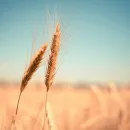 The Russian Union of Grain Exporters claimed that the US Department of Agriculture recognized the sharp decrease in forecasts for the harvest and export of Russian wheat as erroneous since this forecast was made on outdated data.
The new forecasts may cause an increase in market prices for wheat, Russian mediareported.
In its August survey, the USDA significantly lowered its forecast for the Russian wheat harvest for the current year from 85 million tons to 72.5 million tons, citing a lower-than-expected harvest of winter crops.
Also, the forecast for exports in the 2021-2022 agricultural year (from July 1, 2021 to June 30, 2022) was reduced from 40 million tons.
Read more...
The Russian Union of Grain Exporters claimed that the US Department of Agriculture recognized the sharp decrease in forecasts for the harvest and export of Russian wheat as erroneous since this forecast was made on outdated data.
The new forecasts may cause an increase in market prices for wheat, Russian mediareported.
In its August survey, the USDA significantly lowered its forecast for the Russian wheat harvest for the current year from 85 million tons to 72.5 million tons, citing a lower-than-expected harvest of winter crops.
Also, the forecast for exports in the 2021-2022 agricultural year (from July 1, 2021 to June 30, 2022) was reduced from 40 million tons.
Read more...
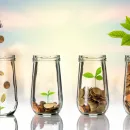 Russia’s economy rebounded in Q2 2021, as the country recovers from the effects of the coronavirus pandemic, official figures showed on Friday. GDPgrew by 10.3% compared to the same period last year, with strong gains in passenger transport, retail trade and mining, according to the federal statistics agency.The economy had contracted in the first three months of this year.
Russia imposed just one lockdown in spring 2020 but has kept its economy open since then. Thatlimited last year’seconomic contractionto just 3.1%, faring better than European countries that imposed more and longer lockdowns.
The European Union also imported€67.4 billion (US$79.5.
Read more...
Russia’s economy rebounded in Q2 2021, as the country recovers from the effects of the coronavirus pandemic, official figures showed on Friday. GDPgrew by 10.3% compared to the same period last year, with strong gains in passenger transport, retail trade and mining, according to the federal statistics agency.The economy had contracted in the first three months of this year.
Russia imposed just one lockdown in spring 2020 but has kept its economy open since then. Thatlimited last year’seconomic contractionto just 3.1%, faring better than European countries that imposed more and longer lockdowns.
The European Union also imported€67.4 billion (US$79.5.
Read more...
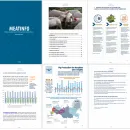 The information and analytical department of Meatinfo.ru presents monthly analytical report on the livestock and meat markets in Russia.
The analytical review is divided into several thematic reports (Cattle Market Review, Pork Market Review, Poultry Market Review, Mutton/Lamb Market Review).
Every separate analytical study includes an overview of the general economic situation in the Russian Federation, an overview of the situation in the meat sector as a whole, as well as a detailed study of a particular sector of the Russian meat industry for a certain period (month, quarter).
You will get the data of the production base, the pricing environment and.
Read more...
The information and analytical department of Meatinfo.ru presents monthly analytical report on the livestock and meat markets in Russia.
The analytical review is divided into several thematic reports (Cattle Market Review, Pork Market Review, Poultry Market Review, Mutton/Lamb Market Review).
Every separate analytical study includes an overview of the general economic situation in the Russian Federation, an overview of the situation in the meat sector as a whole, as well as a detailed study of a particular sector of the Russian meat industry for a certain period (month, quarter).
You will get the data of the production base, the pricing environment and.
Read more...
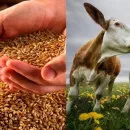 The Russian market of agricultural raw materials and foodstuffs is characterized by:
- Relatively stable total sown area sizes in 2021 and their multidirectional changes depending on the specific culture. The area under all crops, according to preliminary data from Rosstat, in 2021 amounted to 79,911.8 thousand hectares, which is practically at the level of values for 2020.
At the same time, the area under grain and leguminous crops decreased by 1.8%, under oilseeds - increased by 14.4%, sugar beets - increased by 8.6%. The total area under other crops (including potatoes, vegetables, melons and fodder crops) decreased by 7.8%.
If we consider the dynamics not.
Read more...
The Russian market of agricultural raw materials and foodstuffs is characterized by:
- Relatively stable total sown area sizes in 2021 and their multidirectional changes depending on the specific culture. The area under all crops, according to preliminary data from Rosstat, in 2021 amounted to 79,911.8 thousand hectares, which is practically at the level of values for 2020.
At the same time, the area under grain and leguminous crops decreased by 1.8%, under oilseeds - increased by 14.4%, sugar beets - increased by 8.6%. The total area under other crops (including potatoes, vegetables, melons and fodder crops) decreased by 7.8%.
If we consider the dynamics not.
Read more...
© Inline LLC 2015-2025. Privacy Policy | Terms of Service